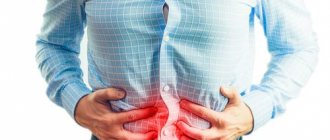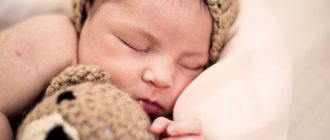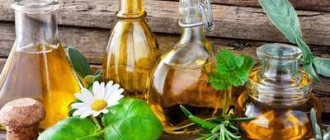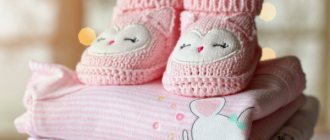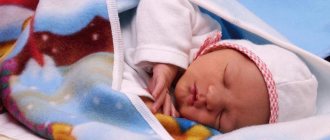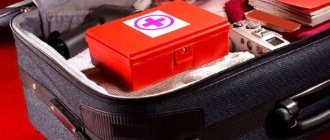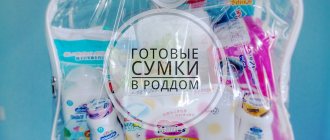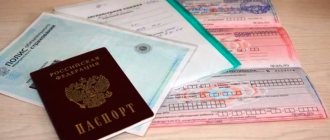Some parents are wary of taking medications for children. However, anyone may need medications, regardless of age. There are many reasons - from providing first aid for a domestic injury to saving a life. The main thing is that the children's first aid kit contains drugs for all cases.
We will find out how to choose the right medications for children, and also provide recommendations on the minimum set of medications that a child may need in different situations. To clarify the specifics of use, we recommend consulting with your pediatrician.
What threatens babies
Even if the baby was born healthy, he will need the products from the home first aid kit in the first days of life. Everyone has an umbilical wound, and diaper dermatitis is a common occurrence. In addition, people often come home from the maternity hospital with diaper rash.
As we grow, new needs for medicines arise:
- for treating small household wounds;
- to eliminate gastrointestinal disorders (including as complementary foods are introduced);
- to reduce temperature.
Next, the baby needs to be protected from the sun, insects, and the habit of putting dirty hands in his mouth. Today you rarely meet a preschooler who is not allergic to something. So even a completely healthy child needs medication from time to time. If diseases more serious than ARVI are diagnosed at an early age, then medications become a permanent part of the child’s life.
List of unnecessary purchases
Of course, responsible and caring parents want to be prepared for anything, including having medications for all occasions. There is absolutely no need to do this. Firstly, if necessary, the attending physician will tell you what additional items should be purchased. Secondly, many medications may simply not be useful to your baby and will remain idle.
In addition, there are archaic items that were previously considered necessary in a first aid kit for a newborn at home, but are now a relic of the past.
So, here is a list of what you definitely do NOT need to buy:
- herbs (chamomile, calendula) for bathing the baby - any plants can cause an allergic reaction, especially for babies. In addition, they dry out the delicate skin of babies;
- oil for treating wrinkles;
- potassium permanganate for bathing: “potassium permanganate” dries the skin;
- brilliant green ("green") for treating the navel: dangerous for the child - in the case of pathology of the umbilical wound, no signs of inflammation will be visible under the pigment, as a result of which you can miss the onset of the disease and lose precious time;
- powder with talcum powder - can damage the baby’s skin;
- antibacterial drugs “in reserve” - antibiotics should be prescribed exclusively by a doctor and used only as indicated.
Now almost everywhere there are 24-hour pharmacies where you can buy what you need at any time of the day. Do not store medicines “for everything” at home: this is a completely unjustified investment of money and effort.
Features of medications for children
The patient's age affects his susceptibility to medications. Some of them, in principle, cannot be taken until 12-14 years of age. Therefore, before giving your baby a product from an adult first aid kit, you should carefully read the instructions and find out for whom it is intended. If you can’t figure it out on your own, you should contact your pediatrician and tell him the name and composition of the drug.
In other respects, children's medications differ from adults:
- dosage;
- shape;
- suction features.
The dosage is usually reduced at the rate of 1/20 for each year of the baby’s life. If an adult is prescribed 100 mg of the active substance, 30 mg is enough for a six-year-old.
Babies do not like tablets, so powders, syrups, and suspensions are produced for them. Due to low body weight, injection fluids may be absorbed more slowly and remain in the muscle for too long.
Composition of a children's first aid kit
With the arrival of a newborn child in the house, it is worth immediately distinguishing between funds for him and for the rest of the family members. As the baby grows, he needs the following:
- for treating the umbilical wound - brilliant green, potassium permanganate or hydrogen peroxide;
- for hygiene - sterile wipes, cotton swabs, cotton wool;
- in case of fever - antipyretic, painkillers and anti-inflammatory drugs;
- in case of an allergic reaction - antihistamines;
- in case of indigestion - sorbents and glucose-saline solution;
- in case of diaper dermatitis - local remedies.
Also, a children's first aid kit should include a body and water thermometer, pipettes, a nasal aspirator, a gas tube and an enema. Keep in mind that the child grows up and this list expands.
Newborn first aid kit
Before going to the maternity hospital, expectant mothers try to think through every little detail for the well-being of their newborn baby. What does a baby need upon arrival home? The answer is simple: a loving mother, a dry diaper, a clean set of clothes and a place to sleep. You should also add a newborn first aid kit to this list. This is exactly what we will talk about in our article.
What should be in the first aid kit
The main components of a first aid kit for a newborn baby:
1. Care products:
- wet wipes - for washing (if, for example, you don’t have the strength to go to the bathroom at night) or wiping dirt on the skin;
- cotton pads - for wiping the skin when dirty and for washing the eyes;
- cotton swabs - to remove excess earwax from the external auditory canal (we don’t go deep under any circumstances!);
- diaper cream (preferably containing zinc);
- baby liquid soap or bathing gel;
- children's patches (unlike adults, they peel off easily from the skin);
- alcohol wipes - for treating scissors before cutting nails or treating the corners of a nail if it is accidentally injured during a manicure.
2. Medical devices:
- nasal aspirator;
- thermometer for measuring body temperature;
- children's scissors with rounded ends or tweezers.
3. Medicines:
- vitamin D3 in the form of drops;
- vitamin K1 (Konakion) – for the prevention of hemorrhagic disease;
- antipyretic (paracetamol-based drugs are recommended for newborns);
- antiseptics (Chlorhexidine or Miramistin are suitable);
- sodium chloride solution (saline solution) in plastic ampoules of 5-10 ml.
This concludes the list of purchases for a healthy baby. We understand the desire of parents to have a million medications on hand for all occasions. However this:
1. It is not practical from an economic point of view, since unused medicines will have to be thrown away in any case.
2. It is not a fact that your child may need the purchased funds.
3. For slightly older children, multi-colored tablets and jars are a huge temptation. How can you not try such a beautiful “candy”? The fewer medications, the less likely you are to end up in toxicology.
It should be noted that the described contents of the first aid kit are aimed at healthy children. If there are any pathologies, its composition will be different. Also, the content will change significantly when planning a trip with your child.
And finally, advice to parents living in large cities, where there are 24-hour pharmacies on every corner: do not store medications at home. Why have a home stockpile of medications if you can go to the pharmacist to get the medications you need at any time? Instead, take care of taking first aid courses in advance. If you know about the rules for providing first aid to infants, you will become much calmer and more confident.
First aid kit for the dacha with a child
Before this, we talked about a regular home first aid kit for the youngest member of the family. There are far fewer dangers at home than on the road. If you are going to the country, to the sea or on any other trip, be sure to pack all the necessary medications for camping conditions.
In addition to medications for fever, stomach upset and allergies, a children's first aid kit should include:
- antiseptics (preferably in the form of pencils);
- bactericidal patches;
- local remedies for bruises;
- creams and lotions for protection against UV radiation;
- repellents and remedies for insect bites.
Children (except newborns) require first aid on the road much more often. This age group, eager to taste everything, is especially predisposed to intestinal disorders. The pharmacy kit for the garden should contain enough of the indicated medications.
Approximate list of necessary funds
We have found out the composition of a first aid kit for home use. Specific names of medications should be selected together with your pediatrician. It is important to consider how children's tablets interact with each other. If we look at the list of what should be included in the home medicine cabinet of an average family with a healthy baby, it looks like this:
- hydrogen peroxide;
- brilliant green;
- adhesive plaster;
- bandage;
- antibacterial wipes;
- gas tube (for newborns)
- Nurofen for children (syrup);
- Fenistil (drops);
- No-shpa (tablets);
- Regidron (powder);
- Aqua-Maris (nasal drops);
- Smecta (powder);
- Miramistin (spray);
- Mosquitol (gel-balm).
Initially, the doctor advises the remedy for the newborn. As the child grows up, parents begin to navigate themselves, which better helps him in emergency situations. Then it becomes easier to assemble a first aid kit.
Means and medications for an emergency (for example, in case of illness of the baby).
Unfortunately, sooner or later parents will face their baby’s first illness. It is better to prepare for this situation and have in your first aid kit:
- A measuring spoon, a special syringe or a special pacifier to give the baby the necessary medicine.
- An antipyretic that can be used from birth. Consult in advance with your pediatrician which product to purchase and have “just in case” in your home medicine cabinet.
- Antihistamine medications approved for use in children.
- Remedies in case of increased gas formation, colic or diarrhea.
- A remedy to relieve a runny nose.
Your pediatrician will tell you which medications to purchase for each item on the list, based on your baby’s characteristics.
What to expect
The presence of chronic diseases forces you to take a larger home first aid kit. Whether you are going on a trip (to the country house, to the forest, to a resort) or staying at home, you may need help at any time.
You should ensure that important medications that are on your mandatory list are in stock and have not expired. It is possible that on the way it will be problematic to take the medicine in the usual form. Therefore, it is worth replacing, for example, powder with tablets.
When traveling, special attention should be paid to prescription medications. You never know what the assortment is in an unfamiliar pharmacy.
It would be a good idea to add analogue drugs to your medicine cabinet. A well-known remedy may one day not work, and in such a case it is better to have an alternative. But only the one that is approved by the attending physician.
What is inside?
A ready-made first aid kit for mother and baby is a small bag or box with partitions. Closes with small zippers. Everything in it is thought out so that any product can be quickly found and taken out when needed.
What does this include:
- medical supplies;
- antiseptics for treating umbilical and other wounds of a newborn baby;
- medications;
- everything you need for hygiene.
It is important to remember that the medications contained in the baby's first aid kit are used only as prescribed by the doctor. They must be present so that in an emergency everything is at hand, but it is strictly forbidden to self-medicate. A newborn baby should be given medications only in accordance with the pediatrician’s recommendations.
The expectant mother can add to the ready-made kit. She may need medications that are prescribed individually by her doctor. Or there are important little things for her that might come in handy. The first days after birth, all attention must be given to the newborn baby, because he needs it so much. Mom should be joyful, calm, and not get nervous if she suddenly doesn’t have some necessary remedy at hand. Therefore, a fully formed set must be ready in advance.



